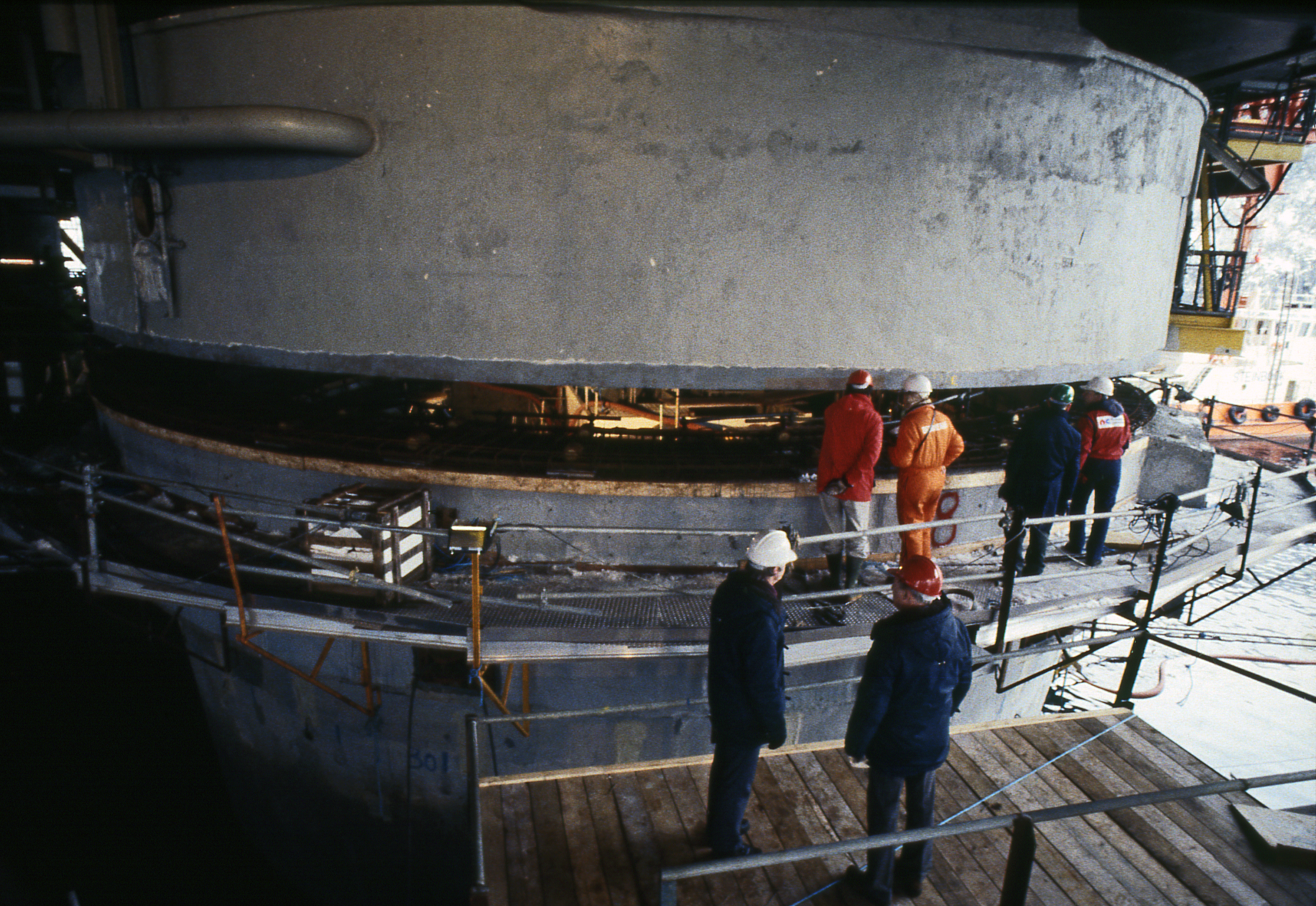Statfjord C mated in the Yrkesfjord

This involved a three-stage operation, simple in principle but calling for extreme precision, which relied on Archimedes’ principle for the behaviour of buoyant bodies in a fluid.
Ballast water was pumped into the GBS until only its top five metres showed above the sea surface. Three barges carrying the topside were then towed between the concrete shafts until the two structures occupied the correct relative positions.
 Bygging, utslep og oppstart,
Bygging, utslep og oppstart,The next step was to pump ballast water out of the GBS so that it slowly rose and began to lift the 42 000-tonne topside off the barges. Over the next few days, more than 100 massive bolts were threaded through the base of the topside and into the GBS so that the two sections were securely connected. Once that job was completed, work began to hook up complex equipment in the topside and the GBS until June, when the platform was ready to be towed out and positioned at the northernmost end of the field.
T o learn more, see: Building Statfjord C .
Sources:
Stavanger Aftenblad, 21 January 1984. “C er i siget”.
Steen, Øyvind. På dypt vann Norwegian Contractors 1973-1993. Oslo 1993, p 46.
Aftenposten , 9 February 1984. “Glatt montering på Statfjord C”.
Aftenposten, 10 February 1984. “Kjempeløft uten kran”.
